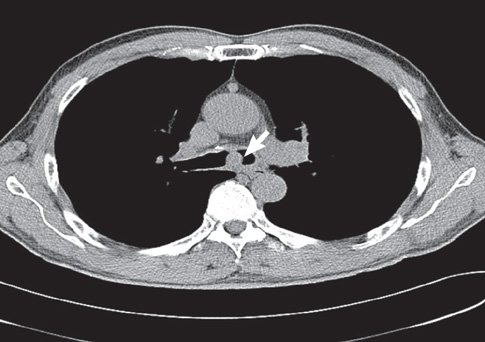J Korean Med Sci.
2010 Jul;25(7):1083-1085. 10.3346/jkms.2010.25.7.1083.
High Frequency Jet Ventilation of One Lung using a Bronchial Blocker of Univent during Carinal Resection
- Affiliations
-
- 1Department of Anesthesiology and Pain Medicine, University of Ulsan College of Medicine, Asan Medical Center, Seoul, Korea. icchoi@amc.seoul.kr
- KMID: 1792962
- DOI: http://doi.org/10.3346/jkms.2010.25.7.1083
Abstract
- Airway management during carinal resection should provide adequate ventilation and oxygenation as well as a good surgical field, but without complications such as barotraumas or aspiration. One method of airway management is high frequency jet ventilation (HFJV) of one lung or both lungs. We describe a patient undergoing carinal resection, who was managed with HFJV of one lung, using a de-ballooned bronchial blocker of a Univent tube without cardiopulmonary compromise. HFJV of one lung using a bronchial blocker of a Univent tube is a simple and safe method which does not need additional catheters to perform HFJV and enables the position of the stiffer bronchial blocker more stable in airway when employed during carinal resection.
MeSH Terms
Figure
Reference
-
1. Yamamoto K, Miyamoto Y, Ohsumi A, Imanishi N, Kojima F. Results of surgical resection for tracheobronchial cancer involving the tracheal carina. Gen Thorac Cardiovasc Surg. 2007. 55:231–239.
Article2. Perera ER, Vidic DM, Zivot J. Carinal resection with two high-frequency jet ventilation delivery systems. Can J Anaesth. 1993. 40:59–63.
Article3. Young-Beyer P, Wilson RS. Anesthetic management for tracheal resection and reconstruction. J Cardiothorac Anesth. 1988. 2:821–835.
Article4. Grillo HC. Carinal reconstruction. Ann Thorac Surg. 1982. 34:356–373.
Article5. Theman TE, Kerr JH, Nelems JM, Pearson FG. Carinal resection. A report of two cases and a description of the anesthetic technique. J Thorac Cardiovasc Surg. 1976. 71:314–320.6. Standiford TJ, Morganroth ML. High-frequency ventilation. Chest. 1989. 96:1380–1389.
Article7. Watanabe Y, Murakami S, Iwa T. The clinical value of high-frequency jet ventilation in major airway reconstructive surgery. Scand J Thorac Cardiovasc Surg. 1988. 22:227–233.
Article8. Giunta F, Chiaranda M, Manani G, Giron GP. Clinical uses of high frequency jet ventilation in anaesthesia. Br J Anaesth. 1989. 63:7 Suppl 1. 102S–106S.
Article9. Benumof JL. Benumof JL, editor. High-frequency and high flow apneic ventilation during thoracic surgery. Anesthesia for thoracic surgery. 1995. 2nd ed. Philadelphia: WB Saunders;432–452.10. Baraka AS. Tension pneumothorax complicating jet ventilation via a cook airway exchange catheter. Anesthesiology. 1999. 91:557–558.
Article11. El-Baz N, Jensik R, Faber LP, Faro RS. One-lung high-frequency ventilation for tracheoplasty and bronchoplasty: a new technique. Ann Thorac Surg. 1982. 34:564–571.
Article
- Full Text Links
- Actions
-
Cited
- CITED
-
- Close
- Share
- Similar articles
-
- Clinical Evaluation of Univent Tube for One Lung Ventilation
- Bronchial Cuff Volume of Univent Tube for One Lung Ventilation
- The Use of High Freqnency Jet Ventilation during Thoracic Surgery
- The Degree of Bronchial Mucosal Damages Related to the Bronchial Blocker Cuff Pressure of Univent(R) Tube
- Comparison of the Effects among Three Methods of Bronchial Blockade in One Lung Ventilation



